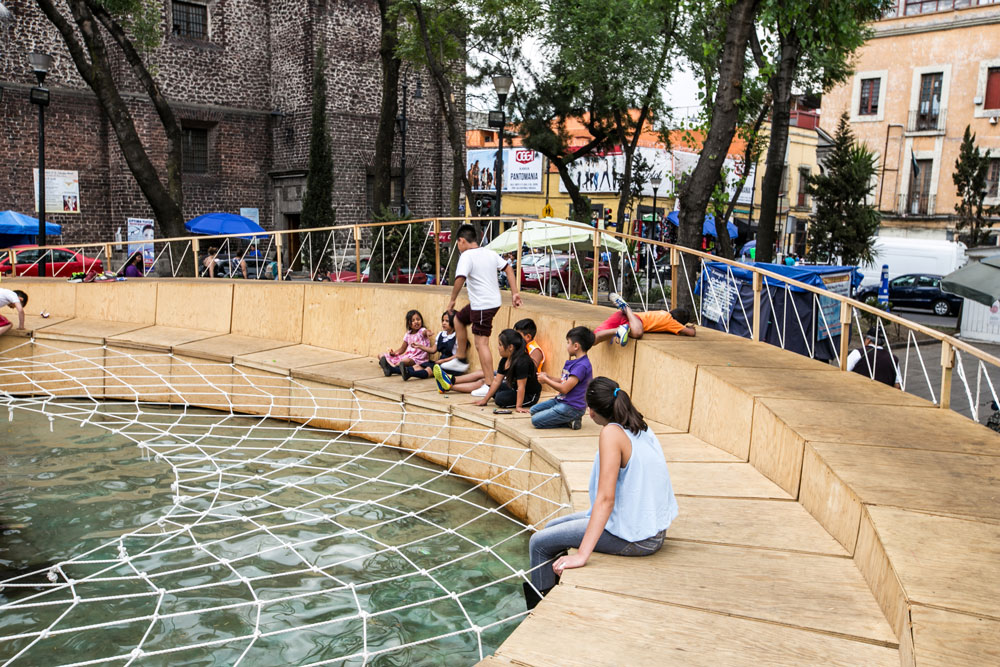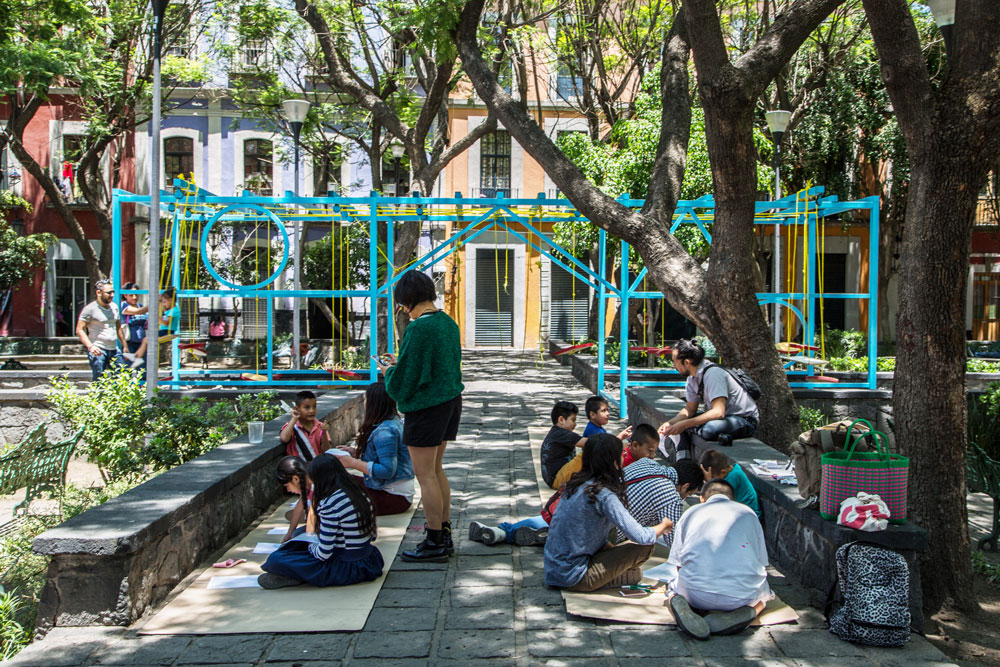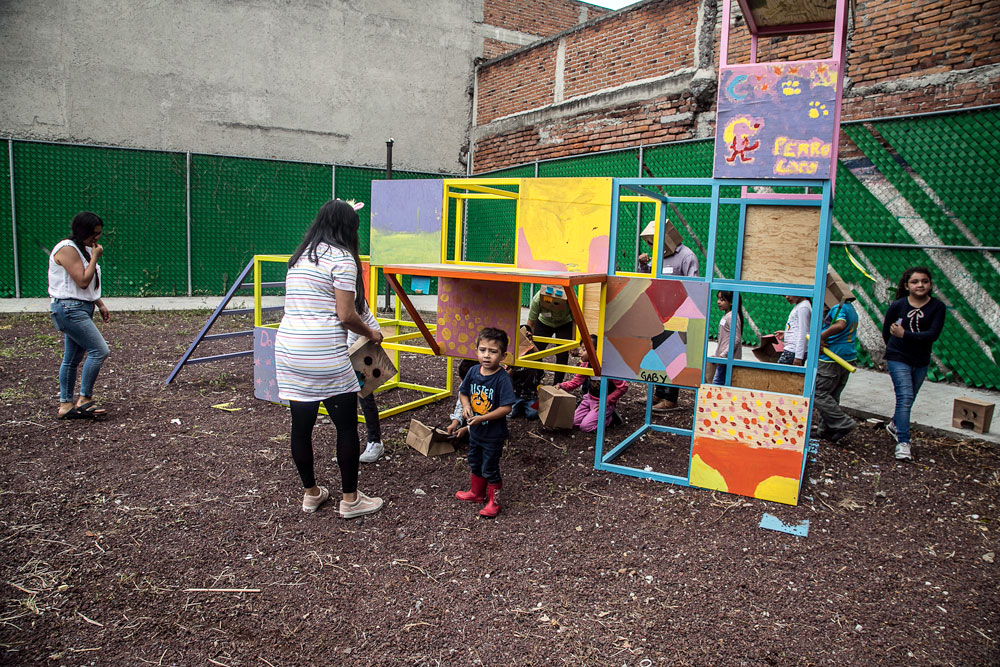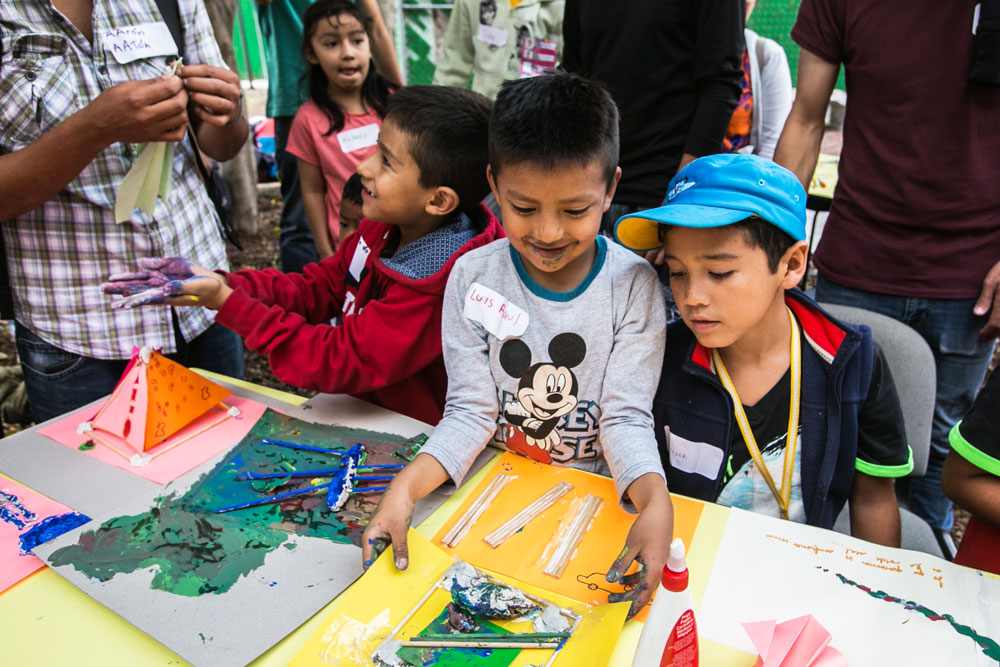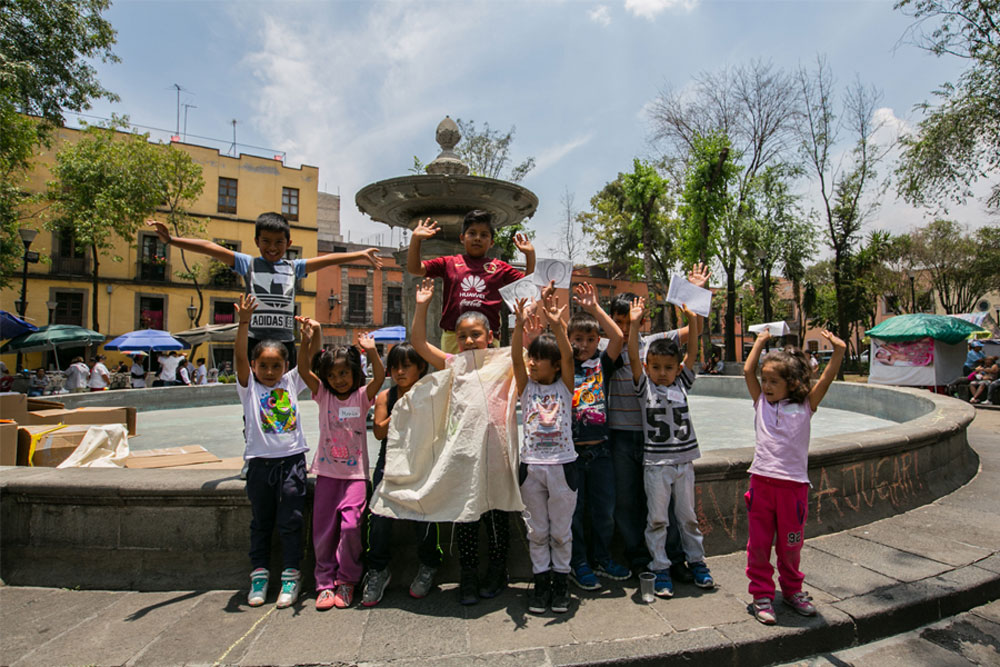
Project profile: Tamaulipas
Leticia Lozano, Mexico City, Mexico
A series of playful workshops with children and families in a disadvantaged area of Mexico City to co-design a playful installation that would transform a disused public space. The resulting project, Tamaulipas, is an urban toy aimed to promote a safe, playful territory that gives children a sense of agency and belonging in the city, and invites a broader audience to experience and enjoy a shared public space. As a result of her work, Leticia won the support of local municipalities who are currently fundraising to expand the project throughout a larger space and use the methodology as a prototype for other areas of the city.
The concept of “urban toy” was first used back in 2017 for the namesake flagship project of Playful City at LabCDMX —the experimental and creative arm of Mexico City’s government. As head of Playful City, from January 2015 to December 2018, Leticia and her team developed a series of projects seeking to position play and children’s perspective as central factors for urban and public policy design, pursuing the (re)integration of children into the public sphere.
Through the Urban Toys project, Leticia developed a methodology of co-designing solutions with children to trigger new paradigms around education, urban planning and spatial justice, and advocate for the recognition of children’s rights with government leaders and decision makers. The project was developed in collaboration with the Historic City Centre Authority and ten other government areas. It re-activated three underused public spaces located in proximity to areas with high population densities of children and advocated for the importance of children’s participation in the design of their surrounding urban environments. They were:
Aros at Plaza Loreto
Polerama at Plaza Santa Catarina
Parque de los Monstruos at Equity Park
Urban Toys sought to be a replicable methodology, thus when the new government closed LabCDMX and Playful City, Leticia did not hesitate and started MACIA Estudio to continue advocating for the importance of play in urban communities.
Tamaulipas is the evolution of the urban toy concept into a play space typology, a children’s participatory methodology, an urban design strategy and an example of how accepting children as autonomous actors and rights’ holders could potentially eradicate their overprotection and revolutionise current paradigms of the adult-centered perspective.
The permanent urban toy is located in U.H. Tlatelolco (a social housing complex designed for 70,000 people, built in the 60s) at an underused garden-like space between the buildings Campeche and Tamaulipas. MACIA Estudio worked with the children and neighbours for over a year to create a space that would invite everyone and has transformed the space in various ways:
- Elderly neighbours feel safer walking to the entrance of their buildings at night, before they had to go around where there was light and more people.
- Local stores have seen an increase of people spending money buying a soda or a snack to spend some time at the urban toy.
- Neighbours notice a decrease in littering (the space had needles, diapers, cigarette buts and all types of rubbish).
- Children take pride in presenting the space to their friends who visit and explain how they are the architects of it.
- A big group of children, who never spoke to each other before, spend their afternoons playing together.
- Neighbours that were against the project in the beginning have started to enjoy the space.
- Other boroughs have started to pay attention to the project.


